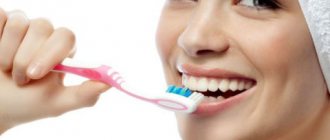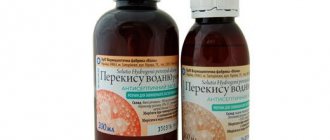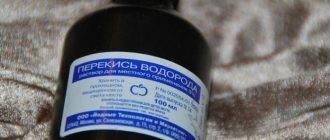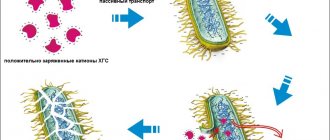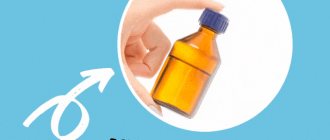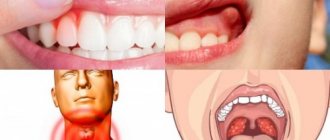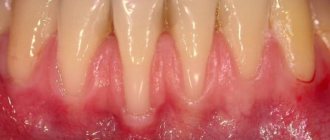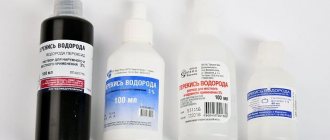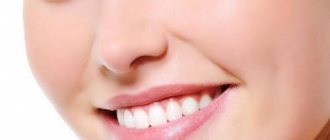Hydrogen peroxide
This drug belongs to the group of oxidants. Peroxide has an oxidizing and reducing effect, and is also a reactive form of oxygen. Some catalysts contribute to the bactericidal effect of the drug. Hydrogen peroxide has a remarkable cleansing effect; the solution can slow down wound scarring due to its strong effect on cells, therefore, when treating damaged skin, only one application for disinfection is recommended.
"Chlorhexidine" replaces hydrogen peroxide and performs the following functions:
- antiseptic (eliminates infections and inflammations on the skin);
- disinfectant (eliminates harmful parasites outside the human body).
It also destroys microbes on living tissue.
Hydrogen peroxide and Chlorhexidine digluconate have some other common features. Both solutions:
- are a clear liquid;
- without smell;
- are not medicines;
- in pharmaceuticals they are presented as an aqueous solution;
- do not cause irritation.
Reviews from doctors and patients
Maria Ivanovna, dentist: “I recommend Chlorhexidine solution for cleaning dentures. A very cheap, effective and accessible product.”
Andrey Viktorovich, pediatrician: “Children are often injured. I advise parents to always have both solutions nearby. Both remedies are suitable for treating fresh, small wounds. If you need to stop the bleeding, it is better to use Peroxide.”
Olga, patient: “We always have both drugs at home. An excellent cheap product for treating cuts and abrasions.”
Inna: “I use Peroxide as an antiseptic. I apply compresses. I recently had a tooth removed and the doctor prescribed Chlorhexidine. They prescribed rinsing three times a day for five days. No complications. The same remedy was prescribed to a child for stomatitis.”
Svetlana, patient: “The doctor briefly explained the difference to me: if the wound is inflamed and infected, then it is better to use Peroxide, and if the wound is at the healing stage, then Chlorhexidine is better. But if the wound is in the mouth, then in any case it is better to use Chlorhexidine. I keep both products at home and follow this advice.”
Indications for use
Can Chlorhexidine be used instead of hydrogen peroxide? The solutions have similarities - both products disinfect wounds, scratches and abrasions. They are also used to cleanse the mucous surfaces of the skin and burns.
Both solutions are prescribed for the following diseases and situations:
- Stomatitis (inflammation of the mucous epithelium lining the oral cavity).
- Periodontitis (inflammation of the supporting apparatus of the teeth).
- Wounds (for treatment).
- Inflammatory processes of the mucous membranes.
Which is better for treating wounds: hydrogen peroxide or Chlorhexidine? The difference between the drugs is as follows.
Peroxide is usually used to treat open wounds of various etiologies.
Chlorhexidine is used to disinfect medical supplies. This solution is also used to treat the hands of the surgeon and nurse before surgery. "Chlorhexidine" is used in gynecology and venereology for:
- Thrush.
- Infectious disease of the human genitourinary system. The causative agent is Trichomonas vaginalis.
- Chlamydia.
- A chronic systemic venereal infectious disease with destruction of the skin, mucous membranes, internal organs, bones, and central nervous system, which is caused by the Treponema bacterium.
- Gonorrhea.
- Ureaplasmosis.
- Inflammation of the bladder.
- Inflammation of the vaginal mucosa, the causative agent of which can be chlamydia, trichomonas, microplasma, streptococcus, staphylococcus.
- Viral disease of the mucous membrane of the pharynx and eyes (herpes).
Question answer
In connection with the epidemiological situation regarding Covid-19, questions arise:
- Will chlorhexidine be safe as a hand sanitizer against coronavirus? In the complex - yes, if it is an alcohol solution containing 95% ethanol.
- Is it possible to disinfect hands with chlorhexidine against coronavirus? Can.
- How to use chlorhexidine for coronavirus? The alcohol solution can be sprayed onto things and applied to the entire skin, avoiding mucous membranes.
- How to use chlorhexidine for coronavirus? It is most effective to use an aerosol spray and treat any non-alcohol-soluble surfaces, including clothing and skin.
- Can surfaces be treated with chlorhexidine against coronavirus? Can.
- Can chlorhexidine be used to prevent coronavirus? Only alcohol-based, in combination with other measures and means;
- Can you use chlorhexidine to wipe your hands against coronavirus? You can treat your hands with an alcohol solution of Chlorhexidini bigluconas.
- What is the concentration of chlorhexidine against coronavirus? According to the CDC, the Covid-19 virus is sensitive to alcohol-containing drugs that contain at least 60% ethanol; in an alcohol solution its content is 95%.
We suggest you familiarize yourself with Green plaque on the tongue, causes and methods of treatment,
chlorhexidine
Composition of hydrogen peroxide
In addition to peroxide, peroxide contains sodium salt of benzoic acid for a greater antiseptic effect.
A diluted solution of hydrogen peroxide contains in 100 milliliters:
- 10 grams of perhydrol;
- 5/10 grams of stabilizer;
- up to 100 milliliters of water.
The peroxide content in the bottle is approximately three percent. It is a clear liquid with a slight odor and low acidity.
Concentrated hydrogen peroxide solution contains 28-30% peroxide. It is a clear, colorless, odorless liquid.
Hydroperite is a complex compound of perhydrol with urea, which contains approximately thirty-five percent peroxide. Sold in the form of milky tablets that easily dissolve in water.
Composition of "Chlorhexidine"
The solution contains an active microelement - chlorhexidine. "Chlorhexidine" is available in pharmacies in bottles from 20 to 200 milliliters. An additional substance included in the composition is ethanol 95%.
A 40 milliliter solution includes:
- Active substance: chlorhexidine bigluconate – 20 milligrams.
- Additional substance: water – up to 40 milliliters.
An eighty milliliter solution includes:
- Active microelement: chlorhexidine bigluconate – 40 milligrams.
- Additional component: water – up to 80 milliliters.
100 ml bottle includes:
- Chlorhexidine bigluconate – 50 milligrams.
- Water – up to 100 milliliters.
A 200 milliliter solution contains:
- Chlorhexidine bigluconate – 100 milligrams.
- Water - about 200 milliliters.
| Installation of a high-capacity battery in Matiz (01/19/2016). → |
They belong to two unique items due to their properties and breadth of application. There was an episode when chlorhexidine was able to stop the rapid reddening of soft tissues due to an infection of unknown etiology (5 cm - and continued to increase). It was used as an emergency first aid remedy - it stopped the inflammation and killed the infection in a few hours without visiting a doctor. However, the question arose: which of these two drugs is more effective in treating inflammation?
It is better to make a table with the properties of these drugs in order to both answer the question and expand knowledge on them.
| Property | Chlorhexidine | Levomekol | A comment |
| Purpose | Antibacterial disinfectant (chlorhexidine) | Antibacterial, bacteriostatic (chloramphenicol), anti-catabolic, regenerating, anabolic (methyluracil) | It is the active substances that are described, not the excipients. Levomekol contains an antibiotic |
| Application | Externally with the creation of a 4-hour antibacterial film, penetrates into tissues | Externally, injections | Levomekol is also injected into tissues using a syringe. The drugs should not be eaten or injected into arteries and veins. |
| Impact | Destruction of gram-negative and gram-positive bacteria (Treponema spp., Neisseia gonorrhoeae, Tricyomonas spp., Chlamidia spp.), pathogens of nosocomial infections and tuberculosis, infections of viral etiology (hepatitis viruses, HIV, herpes, rotavirus gastroenteritis, enteroviral infections, influenza and other respiratory diseases) viral infections), yeast-like fungi of the genus Candida, dermatophytes. | Destruction of gram-positive bacteria: Staphylococcus spp., Streptococcus spp.; gram-negative bacteria: Neisseria gonorrhoeae, Neisseria meningitidis, Escherichia coli, Haemophilus influenzae, Salmonella spp., Shigella spp., Klebsiella spp., Serratia spp., Yersinia spp., Proteus spp., Rickettsia spp.; also active against Spirochaetaceae, some large viruses | Chlorhexidine has a wider range of uses. However, it is advisable to know the name of your infection. Don’t know - you can use it alternately, but not simultaneously |
| Price | 13rub per 100ml | 90rub for 40g | It’s not a problem to have a supply of both drugs in your first aid kit. |
| Non-standard use | Dentistry: destruction of carious pathogens (penetrates the gums and enamel, also see “metrogil denta”) | Dermatology: as a healing agent and also against necrosis | Both are used to treat acne, but the type of acne is important |
| General recommendations | If you rinse your mouth, it will take more than a minute. In general, any local antiseptic should be kept on the surface to be used for at least 1-2 minutes. | No information. I myself change the patches and bandages every 4 hours, and apply more at night. Leaves washable stains on clothes | Chlorhexidine is not compatible with alkaline salts such as soap. But you need to use both products on clean skin - you just need to rinse off the soap completely |
Chlorhexidine bigluconate is better than regular chlorhexidine, judging by the description. The effectiveness of the drugs has been proven in practice today.
(added 02/05/2016): 2 more ointments from the Soviet past performed extremely well: ichthyol ointment and balsamic liniment according to Vishnevsky. One man on the Internet even analyzed the principle of action of these ointments and made the following conclusions: - both are extremely good at drawing out pus even from deep lesions, both smell unpleasant; - liniment increases inflammation in the applied area, allowing the lesion to mature faster. In ichthyolka, this process is slower - but it allows you to treat post-acne, comedones, white plugs and blackheads.
Ichthyolka comes in 10% and 20%; as I understand it, 10% - for ordinary acne, 20% - for large boils and abscesses. Alcohol enhances the absorption of ichthyol ointment. The ointment is also available in suppositories, allowing you to fight peritonitis.
(added 02/07/2016) But “sea water” is also effective.
(added 05/05/2016) Chlorhexidine can cause poisoning if it is swallowed. Timely measures will allow you to survive the poisoning without consequences. Chlorhexidine can also be used to clean air conditioners after removing particularly heavy contaminants.
Tags:
- Vishnevsky
- ichthyolka
- ichthyol ointment
- levomekol
- non-standard
- application
- health section
- solution section
- properties
- chlorhexidine
- chlorhexidine bigluconate
Pharmacological properties
Are Chlorhexidine and Hydrogen Peroxide the Same Thing? These drugs have significant differences in healing properties. Perhydrol, upon contact with a wound, releases chemical bonds of oxygen, resulting in the breakdown of organic microelements (lymph, blood, protein substances) and purification from them.
The solution has a short-term effect and is not a strong stabilizer. When used, the number of harmful bacteria is reduced for a short time. Hydrogen peroxide or Chlorhexidine - which is better?
"Chlorhexidine" has a destructive effect on vegetative types of pathogenic pathogens. Depending on the density of the solution, it provides an antimicrobial and bactericidal effect. "Chlorhexidine" not only helps to stop cell proliferation, but also completely eliminates the source of infection.
The active substance changes the native conformation of protein microelements and oxidizes enzymes. "Chlorhexidine", combining with phosphates on the surface of the cell, displaces osmosis, which leads to the destruction and death of microbes.
Effectively acts against pathogens of the following infectious diseases:
- syphilis;
- chlamydia;
- gonorrhea;
- ureaplasmosis;
- gardnerellosis;
- trichomoniasis;
- herpes.
Fungi, spores and tuberculosis bacteria offer resistance to the drug. Does not penetrate through the unbroken surface of the skin, the effectiveness of the substance decreases when it enters blood or lymph. "Chlorhexidine", like peroxide, is not absorbed by plasma, and therefore does not have a reflex effect when applied topically.
Which is better: hydrogen peroxide or Chlorhexidine? The instructions for use of both drugs describe in detail the positive properties of the drugs.
What is Chlorhexidine
Chlorhexidine has bactericidal, fungicidal and virucidal properties. It is most often used as an antibacterial, antiseptic and disinfectant. Antiseptic drugs are also prepared with Chlogexidine. Due to its wide spectrum of action on bacteria, fungi, viruses and mild irritating effects on the mucous membrane and skin, the drug is widely used in medicine:
- its effect is reduced or neutralized in the presence of organic alkaline substances, in particular soap;
- in bacterial cells, Chlorhexidine damages the membrane, which leads to the death of pathogens;
- Chlorhexidine is highly soluble in organic solvents such as dichloromethane.
Chlorhexidine was initially used in veterinary medicine and was also tested as a cure for malaria. Later it began to be successfully used to combat bacteria.
The chemical hydrogen peroxide is considered one of the most effective disinfectants. The effectiveness of peroxide is even greater when used in concentrated form. Available in the pharmaceutical network in a concentration of 3-10%.
The starting substance is very powerful, and the chemical composition is quite simple - a water molecule made of hydrogen and oxygen with an additional oxygen atom. The substance is colorless and odorless. Due to the intermediate formation of atomic oxygen, it is a very good oxidizing agent, which is used in the laboratory in the form of aqueous solutions in various concentrations.
It is used not only in medicine, but also for household and cosmetic purposes, decomposing after a reaction into simple substances - water and oxygen.
Mode of application
Peroxide is usually used when the skin is damaged for disinfection (disinfection, destruction of pathogenic microbes using special means). When gargling, peroxide must be diluted in a one-to-one ratio with water. To use compresses with hydrogen peroxide, you need to soak a bandage or tampon in the solution, then apply it to the injured area. What is the difference between hydrogen peroxide and Chlorhexidine, which is better?
Unlike hydrogen peroxide, the second drug has several types; it is better to use the solution in accordance with a specific injury or disease.
When female diseases occur, the drug is usually administered into the vaginal cavity. It is also recommended to treat nearby skin. After the procedure, you should not go to the toilet for about two hours.
It is known that hydrogen peroxide or “Chlorhexidine” is best used for the prevention of sexually transmitted diseases. For diseases such as cystitis and candidiasis, Chlorhexidine suppositories are used, which must be administered in a lying position. The dosage of the drug is two suppositories in the morning and evening. The duration of the course is one week.
If a sore throat occurs, you need to take 15 milliliters of the drug “Chlorhexidine” and gargle. This procedure is carried out two to four times a day, after which it is not recommended to consume water or food for 60 minutes.
To rinse the oral cavity, take 15 milliliters of solution and repeat the steps twice a day. If discomfort occurs, it is necessary to reduce the pressure.
To wash wounds and abrasions, a swab should be moistened in the solution, applied to the damaged surface, and left for 7 minutes.
To treat your hands, you need to rub the solution in for at least two minutes.
Features and Action
Chlorhexidine is widely used for treating the affected area, sterilizing surgical instruments, disinfecting the surgical field, and for the prevention of sexually transmitted diseases.
It is necessary to wash the wound with Chlorhexidine to prevent infection or to remove purulent contents from an already infected lesion.
The effect of the drug on the body consists of the following effects:
- destruction of a wide range of bacteria and viruses;
- long lasting disinfectant effect. In surgery, it is used to treat wounds with Chlorhexidine before surgery;
- pronounced antifungal, antiprotozoal, antibacterial action allows it to be used for injuries of various origins (injuries with sharp objects, animal bites).
We invite you to familiarize yourself with Teeth numbering in dentistry: a diagram of a person’s teeth with numbers, tooth numbers in dentistry
A feature of Chlorhexidine, in contrast to other antiseptics (brilliant, hydrogen peroxide, aqueous iodine solution), is:
- does not have a depressing effect on the wound healing process;
- lack of color, unpleasant odor;
- hypoallergenic composition;
- does not cause pain, does not leave marks, which is important when treating skin lesions in children;
- disinfects, but does not stop bleeding;
- does not dry out, does not cause burns of mucous membranes;
- there is no addiction, which allows you to repeatedly use Chlorhexidine for washing wounds without reducing effectiveness;
- used for various localizations of damage, an important condition is the selection of the required concentration: for rinsing the mouth during dental interventions 0.02-0.03%, treatment of injuries - 0.05-0.1%;
- Available in several dosage forms for ease of use: solution (disinfection of wounds, sterilization of instruments, treatment of the umbilical terminal of newborns), gel (for the oral cavity), vaginal suppositories.
Contraindications
Hydrogen peroxide should not be used in the following cases:
- in case of individual intolerance to the drug;
- for allergies;
- children under twelve years of age;
- for dermatitis (inflammation of the skin, most often due to exposure to chemical, biological or physical factors);
- in the treatment of eye diseases;
- In case of traumatic brain injury, it is necessary to avoid getting the solution on an open wound.
Under no circumstances should you use Chlorhexidine and hydrogen peroxide at the same time.
By-effect
When peroxide is applied to the surface of the skin, the following negative effects may occur:
- burning;
- peeling;
- itching;
- redness;
- irritation;
- dryness;
- skin tightness;
- photosensitivity.
Side effects of Chlorhexidine:
- With prolonged use, it can stain the tongue, tooth enamel and fillings a dark shade. This problem disappears after cancellation.
- Using the product for more than fourteen days can have a detrimental effect on beneficial microorganisms and change the microflora of the oral cavity.
- Should be used with caution during pregnancy.
- Until the age of eighteen, Chlorhexidine should be used with caution.
"Chlorhexidine" and hydrogen peroxide in dentistry
In principle, “Chlorhexidine” and hydrogen peroxide are the same thing, both solutions have a disinfecting and antiseptic effect. The drugs are widely used in dental practice. These solutions have differences. First, about the first drug:
- Chlorhexidine inhibits the development of tooth tissue destruction.
- After surgery, the drug is used for oral hygiene.
- Removable dentures are kept in a solution of Chlorhexidine.
- It is used to treat otitis media and sinusitis.
- There is a toothpaste that contains Chlorhexidine.
- Used for preventive purposes against sexually transmitted diseases.
- It is used in medicinal medicines in the form of bigluconate.
- Does not contain poisons, when ingested, it is completely eliminated from the body.
- Chlorhexidine is used to impregnate fabric napkins and gauze for professional and household use.
- They also impregnate the clothes of patients and doctors.
What is the difference between hydrogen peroxide and Chlorhexidine:
- in high concentrations it is considered an explosive substance;
- toxic, can be fatal if taken orally.
Peroxide is used in the beauty industry:
- bleaches hair;
- serves as a detoxifier.
For household purposes, hydrogen peroxide:
- helps in cleaning the surface of windows, mirrors, furniture;
- washes linen and clothes;
- whitens things.
Perhydrol eliminates mold and fungi that affect indoor plants.
Chlorhexidine or hydrogen peroxide: which is better and what is the difference (differences in composition, reviews from doctors)
In everyday life, situations often arise when it is necessary to disinfect certain surfaces on the body. This can be the treatment of wounds, burns, dental diseases. Common medications such as Chlorhexidine or Hydrogen Peroxide can help. However, not everyone is well aware of whether there is a difference between these drugs or whether they are the same drug.
What is the difference?
The composition of the drugs is different, despite the fact that the pharmacological properties are similar, as well as the indications for use.
It is believed that Chlorhexidine has a stable substance formula. Initially, it is a powder of fine white crystals.
It is produced in various forms - both in the form of an aqueous solution and in the form of creams, gels, suppositories, and tablets.
The concentration of the aqueous solution is 0.05-0.2%.
The main difference between Chlorhexidine and Hydrogen Peroxide is its ability to suppress the activity of pathogenic microorganisms and promote rapid healing of wound surfaces.
The main difference between Chlorhexidine and Hydrogen Peroxide is its ability to suppress the activity of pathogenic microorganisms and promote rapid healing of wound surfaces.
The difference between Peroxide is that it has an unstable chemical formula, and the drug is based on simple hydrogen peroxide.
It has been proven that this remedy does not have bacteriostatic properties and, when applied topically, actively affects both damaged areas and healthy tissue, thereby slowing down wound healing.
Peroxide is produced only in the form of aqueous solutions; a standard pharmacy bottle contains the drug in a concentration of 3%.
The difference between the drugs has some features. Chlorhexidine:
- slows down the development of diseases of the oral cavity and teeth, in particular caries;
- often used for disinfection and storage of removable dentures;
- widely used to treat sexually transmitted diseases;
- used as a prophylactic against sexually transmitted infections;
- does not pose any harm to the body if ingested, does not accumulate in the body;
- included in toothpastes;
- loses its properties upon contact with alkalis, including ordinary soap;
- included in the list of vital drugs.
Unlike Chlorhexidine, Peroxide has the following properties:
- too much concentration of the drug if used carelessly can lead to an explosion;
- ingestion in large quantities can lead to negative consequences for the body;
- used most often for disinfection of various surfaces, including for household purposes, to sterilize and clean various surfaces, linen and clothing, and dishes from dirt, fungi, mold;
- Peroxide release form - aqueous solution only.
Thus, despite the similarity of pharmacological properties, there are some differences.
Hydrogen peroxide is available only in the form of an aqueous solution.
Which is cheaper?
The average price of a 0.05% aqueous solution of Chlorhexidine with a volume of 100 ml in pharmacies of the Russian Federation is 12-15 rubles.
A 100 ml bottle of 3% Hydrogen Peroxide costs 10-15 rubles.
Which is better Chlorhexidine or Hydrogen Peroxide?
Both drugs have similar pharmacological properties, but there are also differences between them. Therefore, to choose between Chlorhexidine and Peroxide, you need to take into account the conditions of the given situation, the symptoms, and the expected result. Therefore, before you start using this or that product, you should consult your doctor or study the instructions for use.
Can Chlorhexidine be replaced with Hydrogen Peroxide?
In some cases, for example, to disinfect a small burn or abrasion, you can replace one drug with another. However, if long-term treatment is necessary, the difference in pharmacological properties must be taken into account.
Reviews from doctors
Andrey, dentist: “I believe that Chlorhexidine has an effective effect on the oral cavity of patients with various pathologies. I always recommend it also to patients who have dentures for storing and cleaning them.”
Ilona, otolaryngologist: “Both Peroxide and Chlorhexidine are effective, and most importantly, inexpensive drugs for disinfecting various surfaces. However, before using them as antiseptics, you must definitely study the instructions for use.”
Olga, pediatrician: “Children who lead an active lifestyle often experience minor injuries. I always recommend that mothers use one or another drug to quickly clean the wound surface and avoid bacterial contamination.”
In some cases, for example, to disinfect a small burn or abrasion, you can replace one drug with another.
Patient reviews of Chlorhexidine and Hydrogen Peroxide
Marianna, 34 years old: “I have 2 children, boys, and injuries constantly occur - cuts, abrasions, splinters. Therefore, your home medicine cabinet always contains either Peroxide or Chlorhexidine. You can always quickly treat the wound by simply pouring an aqueous solution of these drugs into the damaged area. The advantage of these products is that they are quite cheap and available at any pharmacy without a prescription.”
Ivan, 25 years old, head of a hiking club: “On hikes, especially long ones, injuries often occur, so we always take antiseptics with us. These always include either Peroxide or Chlorhexidine, or both at once. They are easy to use, odorless, and have good disinfectant properties when treating abrasions, cuts, and burns.”
Source: https://SayDiabetu.net/lechenie/tradicionnaya-medicina/drygie-lekarstva/xlorgeksidin-i-perekisi-vodoroda/
